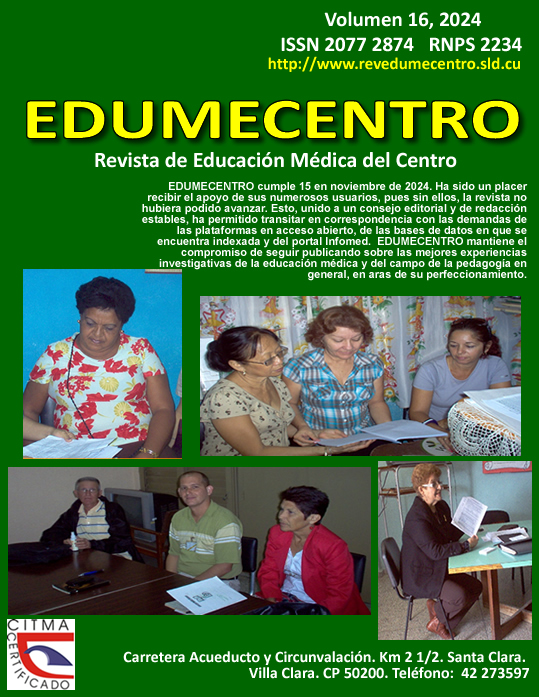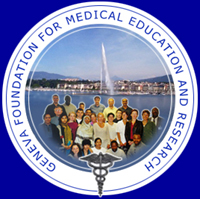Inverted classroom methodology in distance-learning emergency education for dentistry students. Antofagasta, Chile
Keywords:
schools, dental, learning, coronavirus infections, education, distance, medicalAbstract
Background: in 2021 and as a result of the COVID-19 pandemic, the Health Promotion course, in the Dentistry program at Antofagasta University, was carried out in distance-learning emergency education mode. The inverted classroom was presented as a useful methodological strategy to provide continuity to the teaching-learning processes in this context.
Objective: to analyze the perception of Dentistry students at the University of Antofagasta regarding the inverted classroom methodology applied to the Health Promotion course during the pandemic.
Methods: quantitative, observational, descriptive cross-sectional study in Dentistry students at the University of Antofagasta who participated in the Health Promotion course in 2021 (N=60). Purposive sampling was carried out and students were invited to participate. Theoretical methods were used: analytical-synthetic and inductive-deductive; and empirical ones: measurement with a structured questionnaire; Statistics: descriptive analysis, significant differences according to sex were analyzed with the Student's t test, with a p value <0.05.
Results: there was 65% participation (n=39), the majority expressed a favorable perception towards the methodology. They reported improvement in the understanding of the content, participation, communication and interaction of the student with the teachers. In addition to a greater degree of autonomy and self-regulation of the students.
Conclusions: the inverted classroom in distance-learning emergency education was perceived favorably, it responded to the challenges and didactic needs faced during the pandemic.
Downloads
References
1. Marinoni G, Van’t Land H, Jensen T. The Impact of COVID-19 on Higher Education Around the World. IAU Global Survey Report [Internet]. European Union: Publications Office of the European Union; 2020. Disponible en: https://www.iau-aiu.net/IMG/pdf/iau_covid19_and_he_survey_report_final_may_2020.pdf
2. Campos LE. La efectividad del aula invertida en línea como estrategia didáctica a distancia para la educación superior, durante la cuarentena por COVID-19: un estudio de caso. Rev Panm Comun [Internet]. 2021 [citado 05/04/2023];3(1):[aprox. 13 p.]. Disponible en: https://revistas.up.edu.mx/rpc/article/view/2355/1925
3. Persky AM, McLaughlin JE. The Flipped Classroom – From Theory to Practice in Health Professional Education. Am J Pharm Educ [Internet]. 2017 [citado 05/04/2023];81(6):[aprox. 25 p.]. Disponible en: https://www.ncbi.nlm.nih.gov/pmc/articles/PMC5607728/
4. Hew KF, Lo CK. Flipped classroom improves student learning in health professions education: a meta-analysis. BMC Med Educ [Internet]. 2018 [citado 05/04/2023];18(1):[aprox. 38 p.]. Disponible en: https://bmcmededuc.biomedcentral.com/articles/10.1186/s12909-018-1144-z
5. Han E, Klein KC. Pre-class learning methods for flipped classrooms. Am J Pharm Educ [Internet]. 2019 [citado 05/04/2023] Feb;83(1):[aprox. 18 p.]. Disponible en: https://www.ncbi.nlm.nih.gov/pmc/articles/PMC6418854/
6. Pichardo JI, López-Medina EF, Mancha Cáceres O, González Enríquez I, Hernández Melián A, Blázquez Rodríguez M, et al. Students and Teachers Using Mentimeter: Technological Innovation to Face the Challenges of the COVID-19 Pandemic and Post-Pandemic in Higher Education. Education Sciences [Internet]. 2021 [citado 05/04/2023];11(11):[aprox. 19 p.]. Disponible en: https://www.mdpi.com/2227-7102/11/11/667
7. Kirkpatrick J, Kirkpatrick W. An Introduction to the New World Kirkpatrick Model. [Internet]. 2021 In: KP Kirkpatrick Partners Site. Disponible en: https://www.kirkpatrickpartners.com/wp-content/uploads/2021/11/Introduction-to-the-Kirkpatrick-New-World-Model.pdf
8. Gilboy MB, Heinerichs S, Pazzaglia G. Enhancing student engagement using the flipped classroom. J of Nutrition Education and Behavior [Internet]. 2015 [citado 05/04/2023];47(1):[aprox. 7 p.]. Disponible en: https://www.sciencedirect.com/science/article/abs/pii/S1499404614006381
9. Gaviria-Rodríguez D, Arango-Arango J, Valencia-Arias A, Bran-Piedrahita L. Percepción de la estrategia aula invertida en escenarios universitarios. Rev Mexicana de Investigación Educativa [Internet]. 2019 [citado 05/04/2023];24(81):[aprox. 21 p.]. Disponible en: https://www.redalyc.org/articulo.oa?id=14062583011
10. Althubaiti A. Information bias in health research: definition, pitfalls, and adjustment methods. J Multidiscip Healthc [Internet]. 2016 [citado 05/04/2023];9:[aprox. 7 p.]. Disponible en: https://www.ncbi.nlm.nih.gov/pmc/articles/PMC4862344/
11. Vanka A, Vanka S, Wali O. Flipped classroom in dental education: A scoping review. Eur J of Dent Educ [Internet]. 2020 [citado 05/04/2023];24(2):[aprox.13 p.]. Disponible en: https://onlinelibrary.wiley.com/doi/epdf/10.1111/eje.12487
12. Othman SA, Kamarudin Y, Sivarajan S, Soh EX, Lau MN, Zakaria NN, et al. Students' perception on flipped classroom with formative assessment: A focus group study. Eur J Dent Educ [Internet]. 2022 [citado 05/04/2023];24(2):[aprox. 13 p. ]. Disponible en: https://pubmed.ncbi.nlm.nih.gov/35579042/
13. Xiao N, Thor D, Zheng M. Student Preferences Impact Outcome of Flipped Classroom in Dental Education: Students Favoring Flipped Classroom Benefited More. Education Sciences [Internet]. 2021 [citado 05/04/2023];11(4):[aprox. 11 p.]. Disponible en: https://www.researchgate.net/publication/350463878_Student_Preferences_Impact_Outcome_of_Flipped_Classroom_in_Dental_Education_Students_Favoring_Flipped_Classroom_Benefited_More
14. Sandrone S, Berthaud JV, Carlson C, Cios J, Dixit N, Farheen A, et al. Education Research: Flipped classroom in neurology: Principles, practices, and perspectives. Neurology [Internet]. 2019 [citado 05/04/2023];93(1):[aprox. 19 p.]. Disponible en: https://www.neurology.org/doi/10.1212/WNL.0000000000007730
15. Jensen JL, Holt EA, Sowards JB, Ogden TH, West RE. Investigating Strategies for Pre-Class Content Learning in a Flipped Classroom. J Sci Educ Technol [Internet]. 2018 [citado 05/04/2023];27:[aprox. 13 p.]. Disponible en: https://link.springer.com/article/10.1007/s10956-018-9740-6
16. Gallardo López N, Caleya Zambrano A, Sánchez Sánchez E, Feijoo García G, Mourelle Martínez R, De Nova García J. Incorporación del Aula invertida en prácticas preclínicas de Odontopediatría. [Internet]. Valencia: Editorial Universitat Politècnica de València; 2020. Disponible en: https://riunet.upv.es/handle/10251/151245
Published
How to Cite
Issue
Section
License
Los autores que publican en esta revista están de acuerdo con los siguientes términos:- Los autores/as conservarán sus derechos de autor y ceden a la revista el derecho de primera publicación de su obra, el cuál estará simultáneamente sujeto a una Licencia Creative Commons Reconocimiento-NoComercial-CompartirIgual 4.0 Internacional (CC BY-NC-SA 4.0) que permite a terceros compartir la obra siempre que se indique su autor y su primera publicación esta revista.
- Los autores pueden establecer por separado acuerdos adicionales para la distribución no exclusiva de la versión de la obra publicada en la revista (por ejemplo, situarlo en un repositorio institucional o publicarlo en un libro), con un reconocimiento de su publicación inicial en esta revista.
- Se permite y se anima a los autores a difundir sus trabajos electrónicamente (por ejemplo, en repositorios institucionales o en su propio sitio web) antes y durante el proceso de envío, ya que puede dar lugar a intercambios productivos, así como a una citación más temprana y mayor de los trabajos publicados (Véase The Effect of Open Access) (en inglés).









